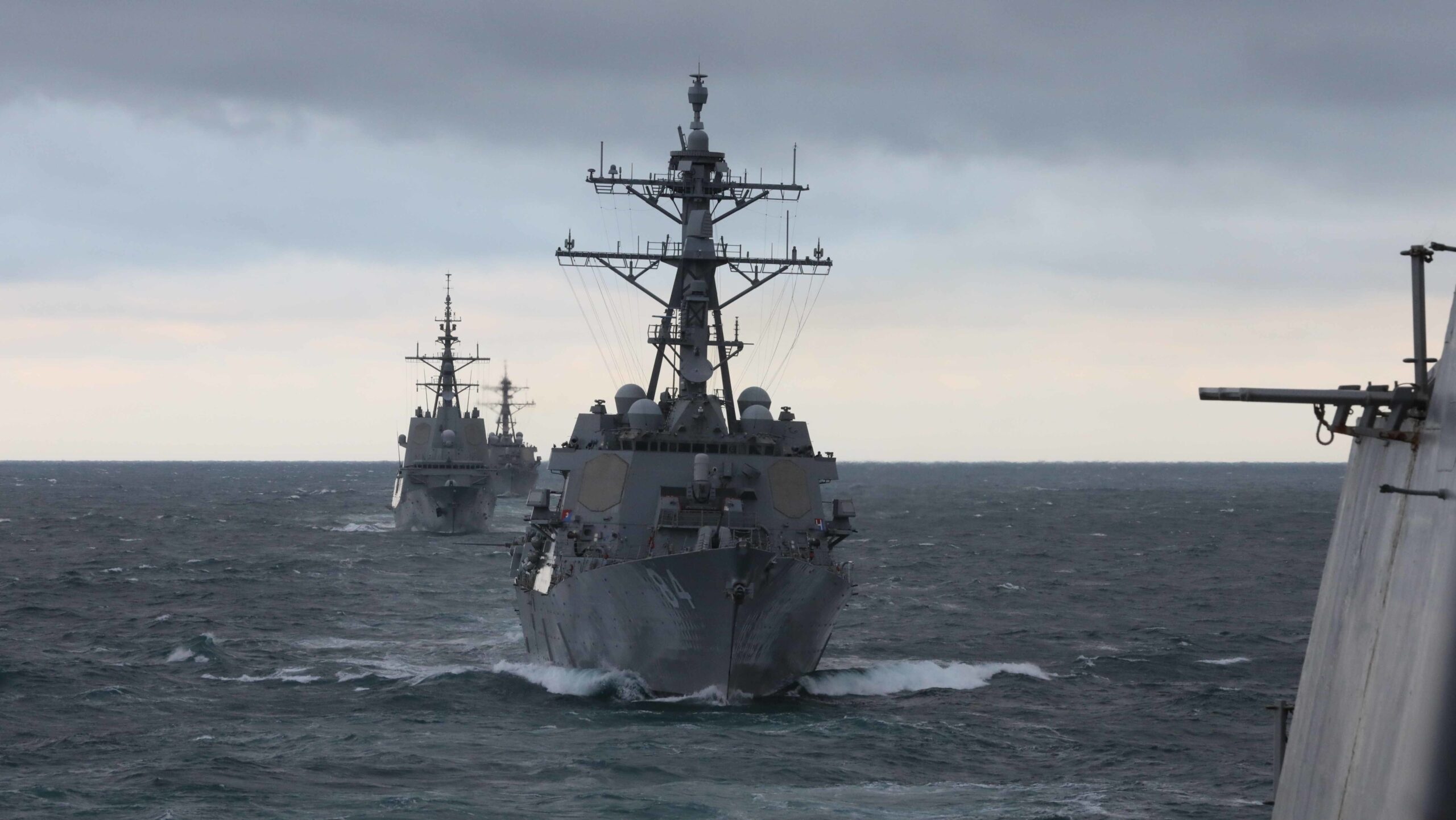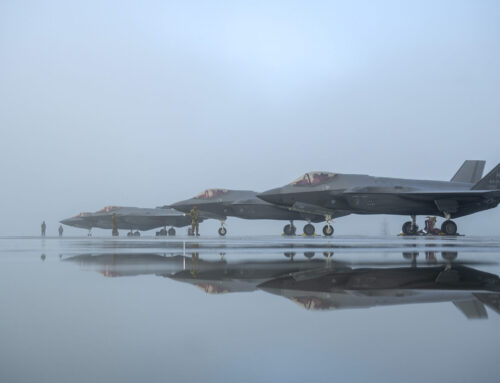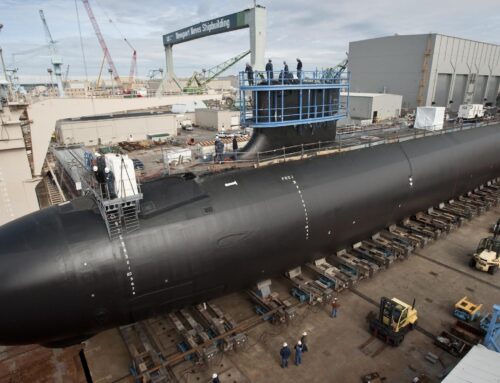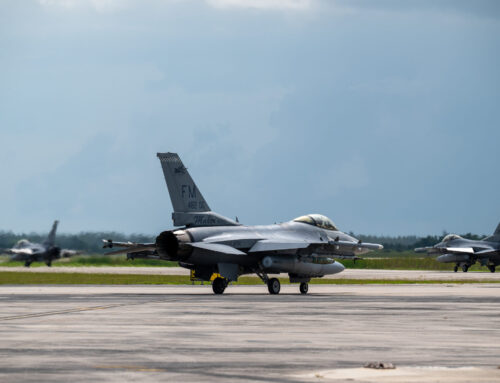The Arleigh Burke-class guided-missile destroyer USS McFaul (DDG 74) participates in a multinational military exercise with NATO allies as part of the Gerald R. Ford Carrier Strike Group. (U.S. Navy photo by Mass Communication Specialist 3rd Class Kerri Kline)
WASHINGTON — Chief of Naval Operations Adm. Lisa Franchetti says the Navy’s new goal to achieve 80 percent surge-ready forces across the service is a “stretch goal” born out of a need to have forces ready to deploy outside the service’s normal training cycles.
Combat surge readiness is “a crisis force generation term. It’s really identifying units that can be made ready through tailored training and certification to go out and be deployed to do a mission outside of the [Optimized Fleet Response Plan],” the admiral told a group of reporters today at a roundtable hosted by the Defense Writers Group. The Optimized Fleet Response Plan, also called the OFRP, is the Navy’s formal process for managing the maintenance and deployment of units and assets.
In Franchetti’s recently published “Navigation Plan,” she sets a new goal for the service to “achieve and sustain an 80 percent combat surge ready posture” across its ships, submarines and aircraft, and has designated the vice chief of naval operations as responsible for hitting that goal.
“Think back to 9/11. We know that all of a sudden we need to get ships underway to do different missions … We want to be able to have a process through each one of our communities: aviation, surface and submarines, that they can certify a ship as combat surge ready, and get it out the door on the timeline that it’s needed,” she said.
Franchetti’s focus on surge-ready forces is different than her most recent predecessors who all focused on maintenance and readiness in some capacity, but often through the lens of maintenance days and the extent to which delays could be eliminated.
“There is a distinction on the 80 percent and its emphasis should be viewed as on warfighting readiness. That said, take that as comprehensive ship repair, holding and training,” Brent Sadler, a senior research fellow at the Heritage Foundation, told Breaking Defense of the CNO’s NAVPLAN. “Clearly, Navy is taking the 2027 date when China intends to be ready to fight/win a war with the US very seriously.”
Much of the CNO’s new NAVPLAN is heavily focused on the year 2027, the deadline to which China’s military is preparing to potentially clash with the United States and allies over the forcible re-unification of Taiwan. Franchetti, who will be the Navy’s top officer when that year comes, has dubbed efforts to prepare the service for that moment as “Project 33.” (The number 33 alludes to the fact Franchetti is the 33rd officer to serve as CNO.)
The CNO characterized the 80 percent figure, as well as most of the other targets in the NAVPLAN, as a “stretch goal,” but argued, “they’re measurable for a reason, which is why we picked the 80 percent because we think that’s a stretch goal, and it will push people harder to get after that.”
“Each community will be looking at, how do they get to that 80 percent right now,” she added.











